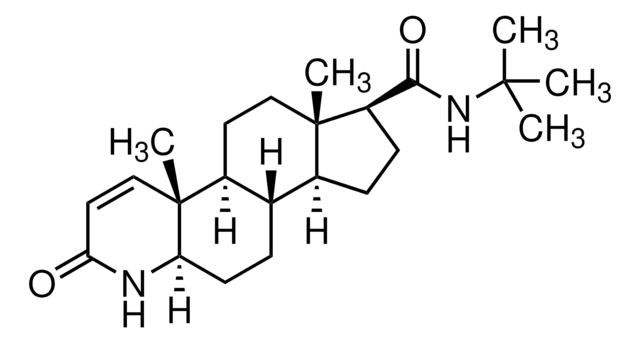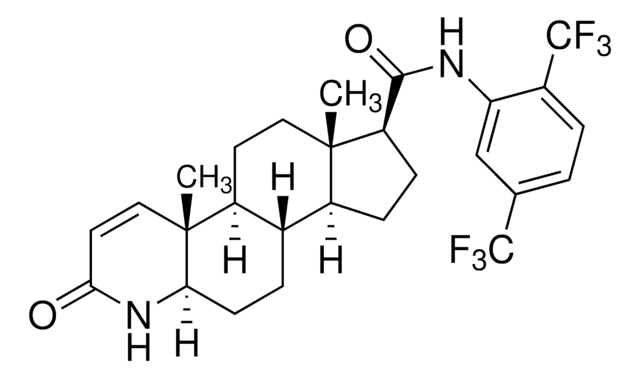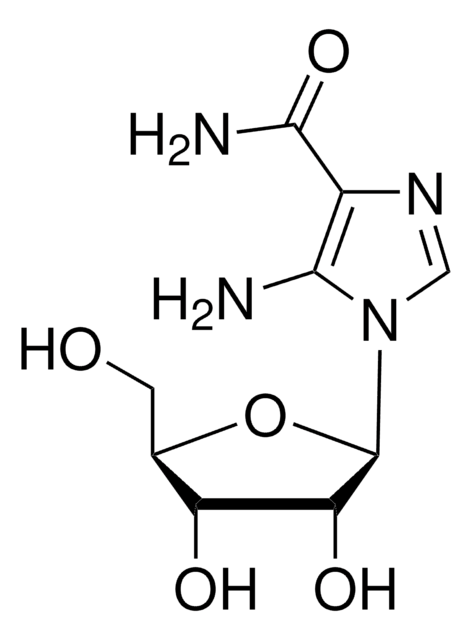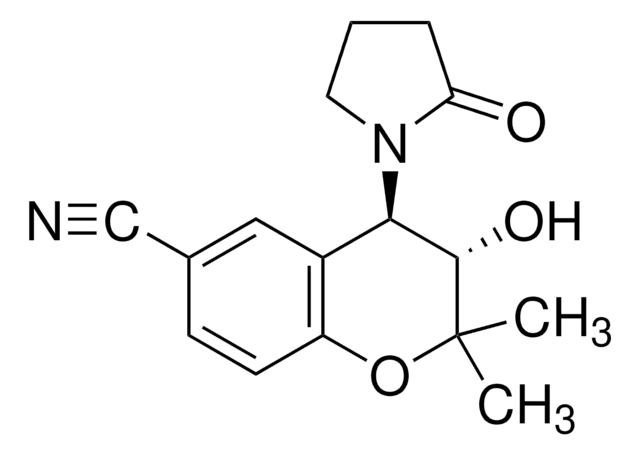Wichtige Dokumente
M4145
Minoxidil
≥99% (TLC), powder, potassium channel activator
Synonym(e):
6-(1-Piperidinyl)-2,4-pyrimidindiamin-3-oxid, 6-(1-Piperidinyl)-pyrimidin-2,4-diamin-3-oxid
About This Item
Empfohlene Produkte
Produktbezeichnung
Minoxidil, ≥99% (TLC)
Qualitätsniveau
Assay
≥99% (TLC)
mp (Schmelzpunkt)
272-274 °C (dec.) (lit.)
Ersteller
Johnson & Johnson
SMILES String
NC1=CC(=NC(=N)N1O)N2CCCCC2
InChI
1S/C9H15N5O/c10-7-6-8(12-9(11)14(7)15)13-4-2-1-3-5-13/h6,11,15H,1-5,10H2
InChIKey
ZIMGGGWCDYVHOY-UHFFFAOYSA-N
Angaben zum Gen
human ... KCNJ1(3758)
Suchen Sie nach ähnlichen Produkten? Aufrufen Leitfaden zum Produktvergleich
Anwendung
- in dermal papilla spheroid model, to study the effect of hair regeneration
- administered orally to experimental rats, in the approach to identify biomarkers of drug induced vascular injury
- administered via oral gavage to nonhuman primate model in order to study its effect on tilt responses
Biochem./physiol. Wirkung
Leistungsmerkmale und Vorteile
Signalwort
Warning
H-Sätze
Gefahreneinstufungen
Acute Tox. 4 Oral - Eye Irrit. 2 - Skin Irrit. 2 - STOT SE 3
Zielorgane
Respiratory system
Lagerklassenschlüssel
11 - Combustible Solids
WGK
WGK 3
Persönliche Schutzausrüstung
dust mask type N95 (US), Eyeshields, Gloves
Hier finden Sie alle aktuellen Versionen:
Besitzen Sie dieses Produkt bereits?
In der Dokumentenbibliothek finden Sie die Dokumentation zu den Produkten, die Sie kürzlich erworben haben.
Kunden haben sich ebenfalls angesehen
Unser Team von Wissenschaftlern verfügt über Erfahrung in allen Forschungsbereichen einschließlich Life Science, Materialwissenschaften, chemischer Synthese, Chromatographie, Analytik und vielen mehr..
Setzen Sie sich mit dem technischen Dienst in Verbindung.









